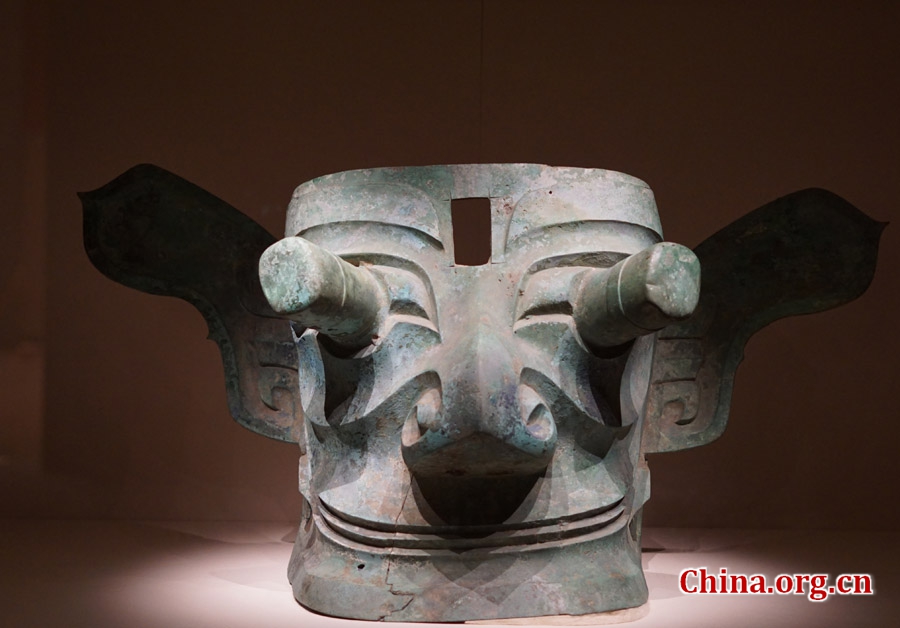Prospect of more discoveries at Sanxingdui after 34 years
- By Wu Jin
 0 Comment(s)
0 Comment(s) Print
Print E-mail China.org.cn, September 8, 2020
E-mail China.org.cn, September 8, 2020
A revolving Sunbird chiseled on a round plate covered in gold foil, a bronze-made towering tree corresponding to the description in China's mythological classics such as "Mountains and Seas," several hilarious facial masks with protruding eyeballs constitute a lost unique civilization discovered at Sanxingdui in Guanghan City of Sichuan province.

The archaeological site, covering about 12 sq. km., is the largest ancient remains with the longest history in southwestern China. With its remarkable cultural and historic significances, Sanxingdui became one of the world's greatest discoveries in the last century.
Recently, a symposium jointly hosted by Sichuan Provincial Cultural Heritage Administration and Sanxingdui Museum was convened in readiness for a fresh round of excavations at the ruins.
"Concerted efforts will be made to help restore the panoramic view of the ancient town in Sanxingdui," said Lei Yu, director of the Sanxingdui Ruins Fieldwork Station.
The upcoming dig projected to be completed within two to three months has been prepared with the establishment of labs designated to provide timely preservation of organic relics, such as silks, lacquerware, bamboo utensils as well as writings discovered on them.
In 1986, the site was officially excavated the first time after its initial discovery in 1929, when a local farmer found many jade artifacts buried in the soil while wielding his hoe.
The excavation of the first two pits, used for sacrificial ceremonies, enabled insightful studies of the ancient Shu Kingdom, a mysterious and bizarre civilization emerging, prospering and then vanishing roughly between 3,000 and 5,000 years ago.
From Oct. 22, 2019 to Aug. 8, 2020, archaeologists from Sichuan Provincial Cultural Heritage Administration and the Sanxingdui Museum explored the area around the two pits and managed to work out a chronicle for the relics unearthed there.
According to Lei, the research of Sanxingdui remains at the initial stage and more efforts are still needed to find out answers to puzzles ranging from the structure of the city gates and pavement patterns to local beliefs, conventions and political systems combined with divine and secular powers.






Go to Forum >>0 Comment(s)